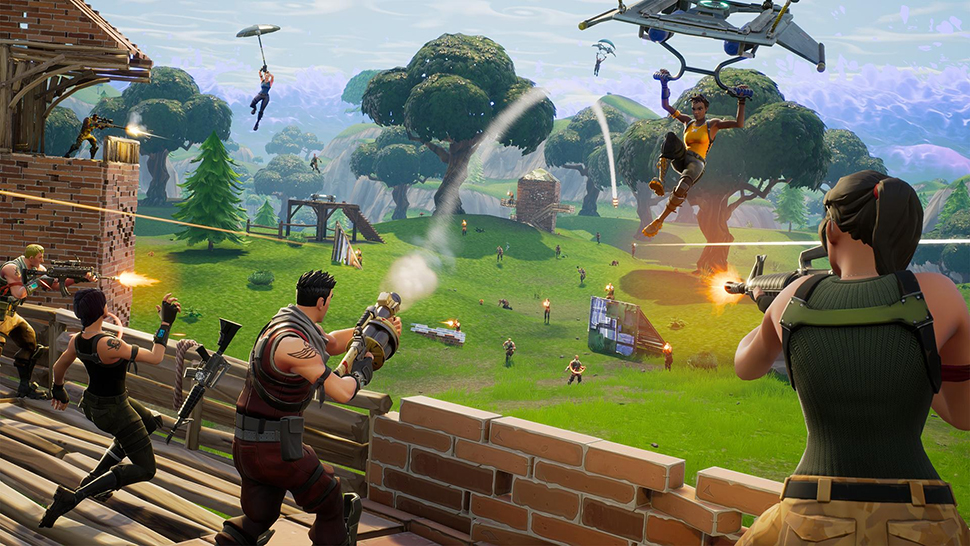
This is a re-published article that we've picked as one of our favorites of the last year from our suite of TechRadar Originals.
Standing in the middle of Pleasant Park’s soccer pitch, an ascending snake of construction begins to wind around me - swift and precise building, every placement strategically positioned and slotting into each other like a 3D puzzle.
Within moments, I’m staring up at an impenetrable metal fortress as the architect triumphantly looks down at me and shouts “now it’s your turn”.
Last month the Wall Street Journal revealed that parents are paying Fortnite coaches to teach their children. Why? Because of playground politics. Fortnite is the latest social proving ground, following a long line of generational trends such as Pokemon, Beyblade and conkers. To a kid, not being talented makes you the runt of the pack - or the laughing stock of the schoolyard.
To avoid their children being picked on by their peers, parents are hiring Fortnite tutors to hone their children’s skills - much like you would a piano or guitar teacher - and paying them between $7 and $30 an hour.
When the Wall Street Journal made this revelation, the online reaction was pretty mixed. While some compared hiring a videogames tutor to a soccer tutor, others failed to see the reason parents were shelling out so much money for a game. Surely it is a waste of money to hire a tutor for what should be just a pleasant, entertaining distraction? But what do these tutorials actually involve and do they really improve your Fortnite skills? I hired my very own Fortnite tutor to find out.
My own Yoda
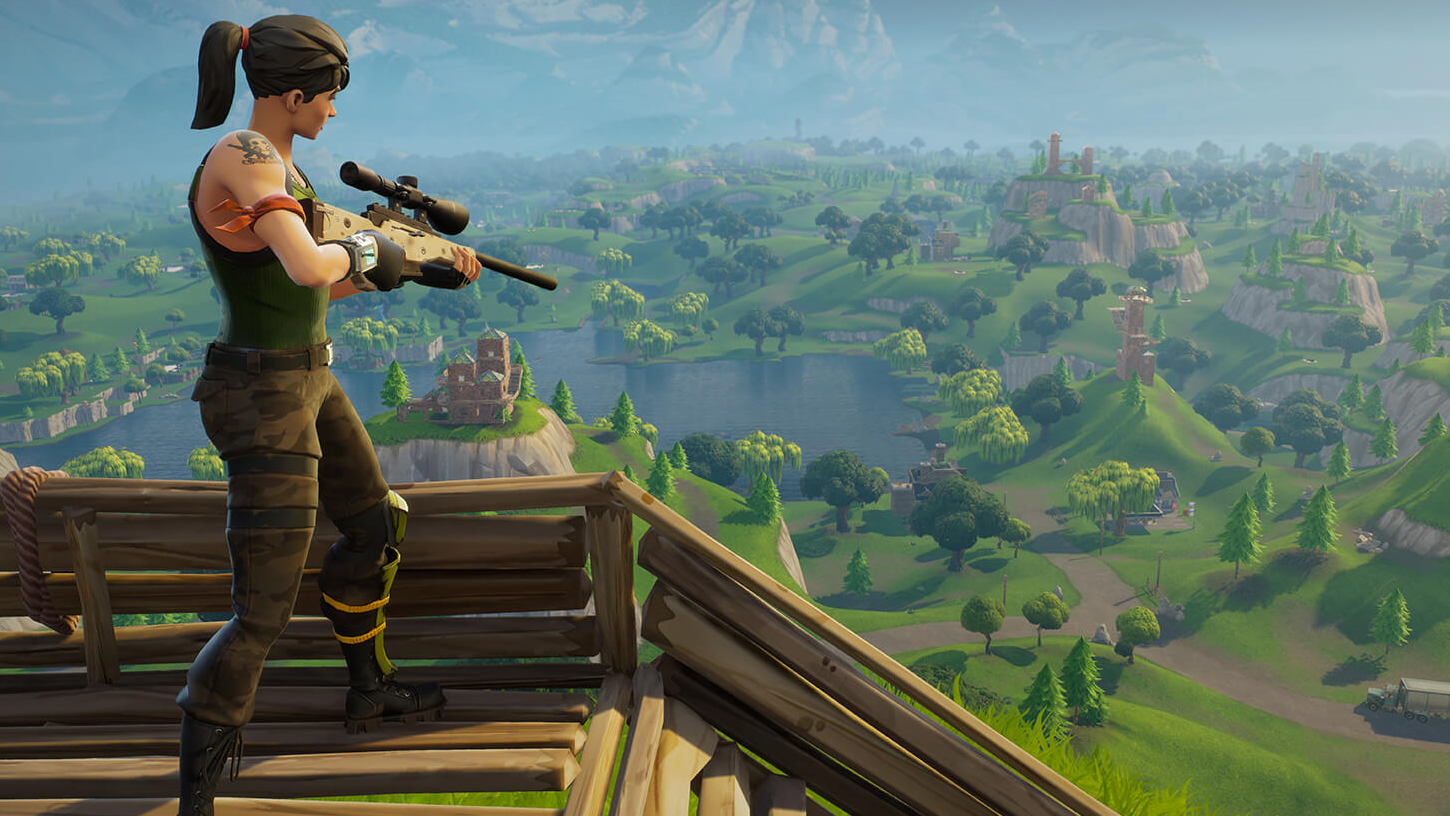
I would consider myself a Fortnite intermediate. My strategy is typically to loot and hide until the final storms, avoiding head-on combat where possible and getting a handful of eliminations when lady luck is feeling merciful. Though I often rank in the top 10 for solo matches, and have the occasional duo win with friends, there is definitely room for improvement.
Sign up for breaking news, reviews, opinion, top tech deals, and more.
So who better to teach me than a professional Fortnite player? Enter Harry Darwin - Fortnite pro, Twitch streamer and my very own Yoda, on a mission to upgrade me from a mere padawan to a full-blown Jedi (Fort)Knight.
Harry, also known as DarzFN, is the highest rated - and most expensive - Fortnite tutor on gaming coach website Gamer Sensei. Charging $30 per hour for lessons, Harry’s coaching profile boasts over 10 years of competitive gaming experience, tournament wins, a contract with a professional Fortnite team and a love of dogs - it’s not hard to see why he is the best, so I send him a message.
It’s not long before Harry gets back to me, keen to help and as down-to-earth as advertised. We arrange my two-hour lesson for a week later and I apologize in advance for my poor skills.
Professional panicker

There’s something very nerve-wracking about knowing you’re going to play a game with a professional, especially when it’s common knowledge among your friend group that you have all the aiming accuracy of a dizzy mole.
When the day finally comes, I find myself extremely nervous. Will he judge my accuracy? What if I’m the worst student he’s ever had? What if he doesn’t show up?
The latter became a real concern when the clock hit 5:30pm and Harry had not appeared, but the fear was quickly alleviated when I received a message from my Yoda - he has just been to the gym and was grabbing a shower. Gaming Senseis are just normal people too.
I boot up my PlayStation 4 and prepare to Skype Harry, who is playing on PC. The problem with this arrangement is that I can hear Harry great, but not my game.
As advertised, Harry is a down-to-earth English guy in his early twenties. He is chatty and forthcoming, putting me at ease immediately. He explains to me his plan for our two hour session: we will begin by practising in-game strategy in duos and then move onto playgrounds to work on building.
Lucky landing and looting

Harry’s first question is about my controller layout. After some mild confusion, we work out I use the default Combat Pro settings. Harry’s first recommendation is changing to Builder Pro (which I didn’t even know existed), as this allows you to build much quicker.
"Fortnite is all about building,” Harry explains. "The better players aren't really necessarily the better shooters, it is normally down to the speed you build and how efficiently you can build."
"Builder Pro makes it easier to get to certain paces of building, so it helps you get your speed up, your building, your accuracy."
We decide not to change the setting now as it would make Harry’s job even more difficult. Trying Builder Pro after our lesson, I understand why he recommended keeping my original settings for the lesson - my wall building was reminiscent of a maze built by a drunk lord. You can activate Builder Pro on your own console by going to ‘Settings’, ‘Wireless Controller’ and selecting ‘Builder Pro’ under ‘Configuration’.
The pleasantries are over and the time comes for us to board the Battle Bus. As we wait for a match, we make small chat. Harry takes the lead, asking about my work and what games I enjoy - I immediately begin to lose the quiver in my voice. I throw a dab his way and swing my pickaxe at his character, forgetting I’m not playing with a friend but a teacher - it’s the equivalent of calling your lecturer “mate”.
The better players aren't really necessarily the better shooters, it is normally down to the speed you build and how efficiently you can build.
Harry Darwin - Fortnite Coach
It’s not long before we’re onboard the Battle Bus. Harry advises we land outside of the bus’ path, somewhere like Lonely Lodge, Wailing Woods, Junkyard Junction or Snobby Shores. But instead of landing in these destinations, he decides to show me his favorite landing spot - the unmarked factory to the south.
The aim is obviously to land as quickly as possible, so you have time to loot everything and grab a weapon before enemies do - but it’s never been my strong point. I’m more of the “let’s hover over the place I need to be landing for an unnecessary amount of time” person. The trick, Harry explains to me, is to go for a quick landing on low ground - as opposed to mountains. To do that, you should be aiming to open your parachute roughly one grid square away from your landing destination.
The reason Harry tends to choose the unmarked factory is simple - it’s not very popular and there is a lot of loot. Most importantly, there are a lot of materials and they are the key element of Harry’s game: “always building over weapons”.
So which materials are best to farm? Wood, apparently, as it’s quick to farm. Within two minutes of dropping he has already gathered 260 pieces.
"When we're in a fight that's going to give me plenty of resources to defend myself,” he explains."Every game we're trying to grab up to 999 wood.That's the thing we're going to try to change in your gameplay."
As we enjoy the limited amount of quiet time, Harry takes the opportunity to ask about my Fortnite experience.I feel silly as I nervously rhyme off my solo, duo and squad wins, he laughs politely and encourages me “that’s not bad” - we both know he’s lying.
As we head towards the center of the storm, Harry continues to farm trees, gather ammo boxes and smash furniture. He’s constantly thinking about his resources.
"The majority of people I coach, when it comes to combat, they shoot first and build later," he tells me. "Being efficient at building and able to build is like having a million shields.”
Higher ground
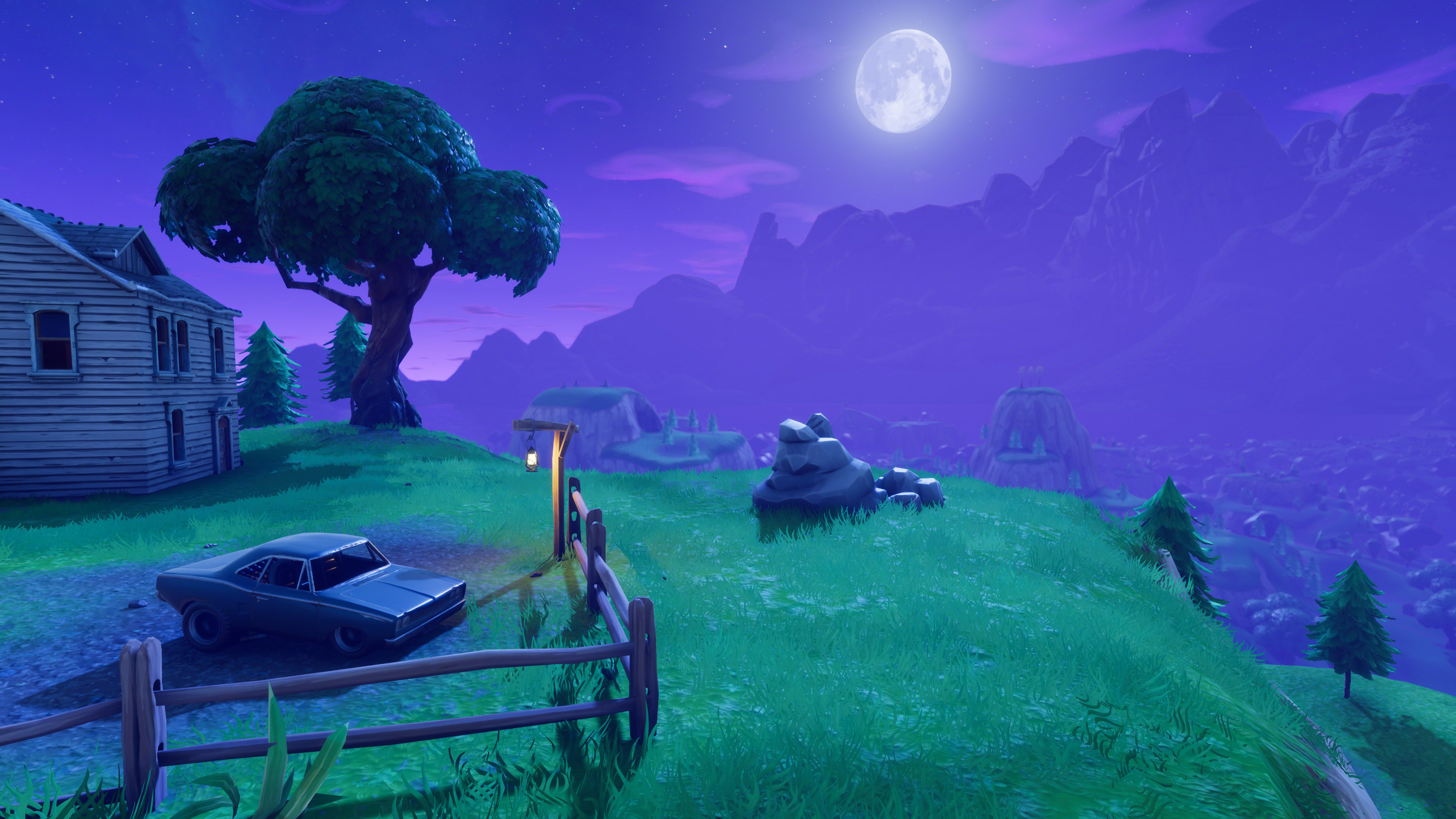
While it’s quiet, Harry decides to teach me about the power of peeking. He advises that, when we come into combat, my first reaction should be to build a wall, then perhaps a set of stairs set against it for peeking.
So how do you peek? It’s pretty simple, you crouch so that the enemy can’t see you head over the stairs, then quickly peek (or uncrouch), take a few shots and crouch straight-away again. It’s a great way to take shots at an enemy without leaving yourself vulnerable to fire. The problem is when the enemies begin to build up to you. The solution - build upwards and take the higher ground.
Harry cannot emphasize the importance of higher ground enough. It’s a vital element of his winning strategy, and is particularly important in the final few zones because it allows you to shoot downwards on your enemy - creating a larger hitbox on them and therefore causing more damage. You should always consider positioning before combat.
"The main thing is information we can get,” he explains. “We can find out where the other players are located, we can plan our next move a bit better and it's a lot harder for others to compromise our position and damage us."
As the final storm closes in we continue to search for higher ground, somewhere not too central. Harry has memorized the direction the Battle Bus took, so he has an idea where most of the players dropped - his eyes are forever on the minor details.
As we enter the final storms, I feel it’s a good time to ask about whether my load-out is up to scratch - I have an SMG, dual-pistols and an assault rifle.
"My favorite loadout would be: a shotgun, an SMG, a rifle and a sniper or RPG - the last slot I always save for a bit of healing,” he tells me as we run towards Harry’s next expertly-placed marker.
“SMG is useful for spraying down walls, so when players are hiding behind walls you can get out your SMG and spray the wall down. I normally play a pump shotgun because you can get more damage. I know for console players it's easier to use a tactical shotgun - it’s definitely something I’d recommend for console. I take a rifle for that medium to long-ish range and then a sniper or RPG."
But his absolute favorite weapon is a shotgun as “it’s perfect for close-quarter combat”. So which weapons should I dispose of? "Definitely the dualies,” Harry says. “They're pretty hopeless to be honest. Shotgun is so much better." They’re my favorite.
Being efficient at building and able to build is like having a million shields.
Harry Darwin - Fortnite Coach
Then, gunfire. An enemy team is approaching and I immediately start to panic - but Harry isn’t concerned. "We could take a fight here, but in these later zones positioning is so, so, so important,” he explains. So, we continue on to our next marker as Harry throws up walls behind us.
Still focusing on the higher ground, Harry has placed our marker on a hill. As we arrive, he immediately starts piecing together a metal fort - our safe haven in the chaos. I try and stick close by, but apparently that’s not ideal. "I like to have your own bit of space,” he politely tells me. “Because if you're both in the same space then it starts to get a bit awkward, people are pushing and stuff."
It’s the final 11 and it’s disturbingly quiet. The calm before the storm, as it were. As we perch in our metal fortress, Harry explains what we’ll do when enemies attack - knock them down, push up for higher ground or, in the event of a grenade launcher being used, get out of dodge. This was lost on me.
Less than 10 seconds later a grenade exploded in our fort, knocking me down (I didn’t move), and leaving Harry alone to tackle the explosive pair alone. As I lay underneath a protective ramp Harry had built, I watched him weave in and out, dodging enemy shots and building ascending platforms until finally he was knocked down. We came in second place.
I apologize profusely for my inability to multitask, but Harry is as kind as ever. "Easiest way to learn is try to force yourself to remember something,” he reassures me. “You need to think ‘I'm in a fight, I need to build now’. The more you do it, the more it'll become muscle memory."
Becoming a master
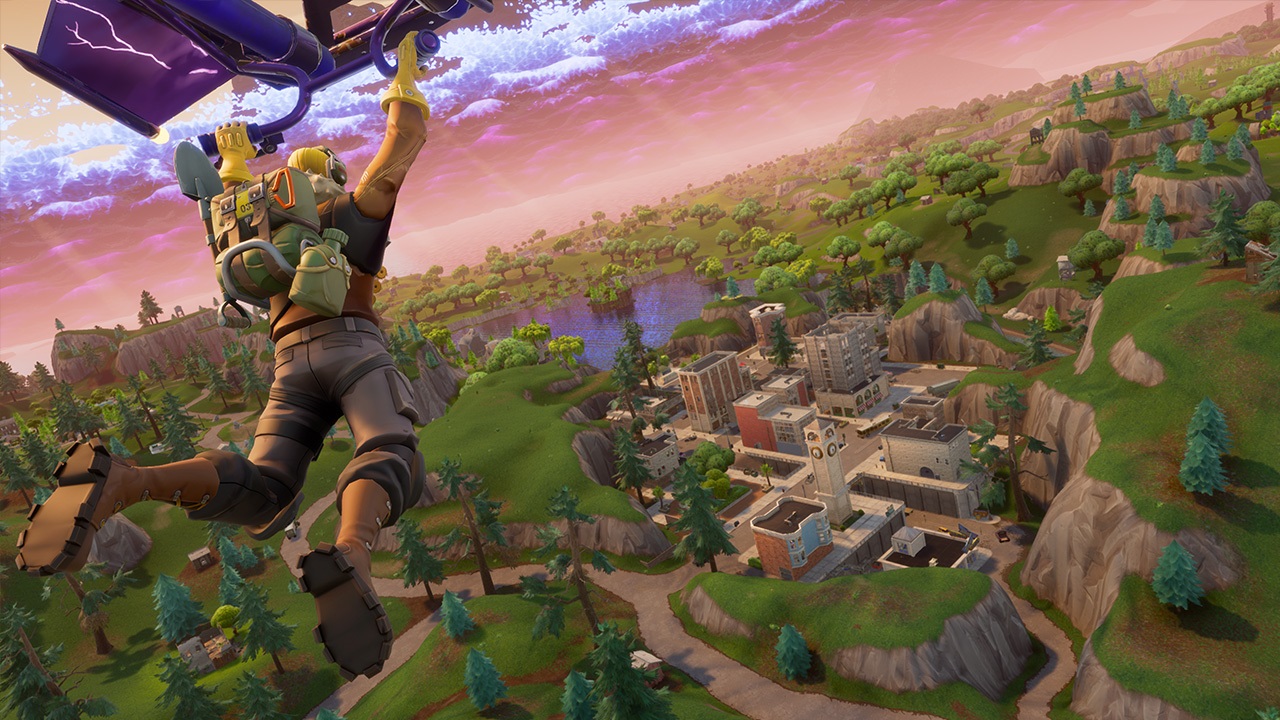
As I wallow in defeat, I ask Harry about how he became a professional Fortnite coach. My assumption was that you simply sign up and that’s it but apparently the process is much more professional.
Harry explains that he is a professional Fortnite player, currently in the midst of signing a contract with a professional team (he couldn’t say where). It was while playing in a tournament that he heard about coaching, as his opponent brought up they were a coach and referred Harry to Gamer Sensei when he showed an interest in joining up.
Much like any job, becoming a coach involves passing a screening and interview process which examines the applicants Fortnite experience, personalities and performs background checks. So how has Harry become so popular? Having got in right at the start of the Fortnite hype, Harry says he was “in the right place at the right time” and has enough time to get his reviews up. Since it became common knowledge that Fortnite tutors are available, Harry has had to increase his fee due to increased demand.
But it’s not just kids that he teaches - many of his students are teenagers, semi-pros, adults and parents. “I coach anyone and everyone,” he laughs. “I think that coaching has grown because of the rise of esports. If you like football then you’ll look look up to Steven Gerrard. I feel like, in this day and age, people are starting to look up to streamers and professional gamers.”
“People are looking up to these players, they want to be like them. A soccer fan might start soccer lessons because he wants to be like his idol. I think that’s one of the biggest reasons coaching is getting so popular.”
People are looking up to these players, they want to be like them. A soccer fan might start soccer lessons because he wants to be like his idol.
Harry Darwin - Fortnite Coach
But not all the hype around Fortnite has been positive, social media and mainstream press have been rife with articles on Fortnite addiction, predators and how the game is turning the brains of our children to mush.
“There are a lot of things in this world that people get addicted to that are very bad for them,” Harry tells me. “I feel like gaming, yeah, can be one of them but so can eating or running too much.
“There are lots of things which, if you do too much, can have negative effects. Pointing the finger and blaming something is just the easy way out. What parents should really be doing is educating their children to have a healthy balanced lifestyle.”
Playing Fortnite for a living may sound like a dream, but Harry is also a student and balancing his coaching, pro gaming, social life and down-time can be a struggle. Even during our game, he had to ask for a ten minute break to eat his dinner - which he had let go cold.
Currently Harry’s debating whether to defer a year of university to pursue his pro career. But a full-time gaming career isn’t something he plans on going into with rose-colored glasses.
“It's a generational thing - not many older people are gaming so they don't have the expertise the younger people have for going into other business ventures or running a team,” he explains. “Even if the professional career doesn't take off, I'm hoping the networking will help and I can make a bit of money to invest.”
Building blocks

As we play more games, I feel like I’m learning a lot of theory that I cannot implement practically due to my own slowness. However, I am making an effort to build the moment I see enemies, and to consider the strategy of my movements. Harry praises me for my increasing reaction speed, though my builds are often poorly put together and in the wrong place.
Harry decides it’s time to move into Playgrounds to work on building strategy. We land in Pleasant Park and level the soccer pitch to give us a room to build. Lesson one is simple: block someone shooting at you. We stand at opposite ends of the field and Harry explain he will begin shooting at me - my job is to hold down R2 to keep building walls, so that every time one is destroyed another immediately takes its place.
Ready for the sweet embrace of death, I agree. Harry counts down and begins to spray his SMG at me, I immediately hold down R2 and shake my view back and forth to create two walls which automatically are replaced by another when they fall. I am invincible. As Harry runs out of ammo he instructs me to build a stair up onto the wall I’ve built and to take a few shots while he reloads. It’s a simple but effective trick.
As we continue, Harry shows me simple but effective ways of building structures which are difficult for enemies to destroy quickly. Most of the premises are fairly simple, such as building a wall and floor on each stair to stop it being shot out from below you or building double stairs, and it makes me wonder how I never considered them previously.
I’ve always looked at Fortnite as an FPS with building mechanics when really I should be looking at it as an engineering game with some shooting involved. Building and strategy is key.
“I came into Fortnite with the mindset I wanted to be the best,” Harry explains to me as we manoeuvre around the wooden remains of my lessons. “When I watched others, I picked the stuff up within a few minutes and learned it very quickly. General gamers don't have that mindset and when they're watching streamers it's for enjoyment, while I was watching for revision.”
Changing your mindset
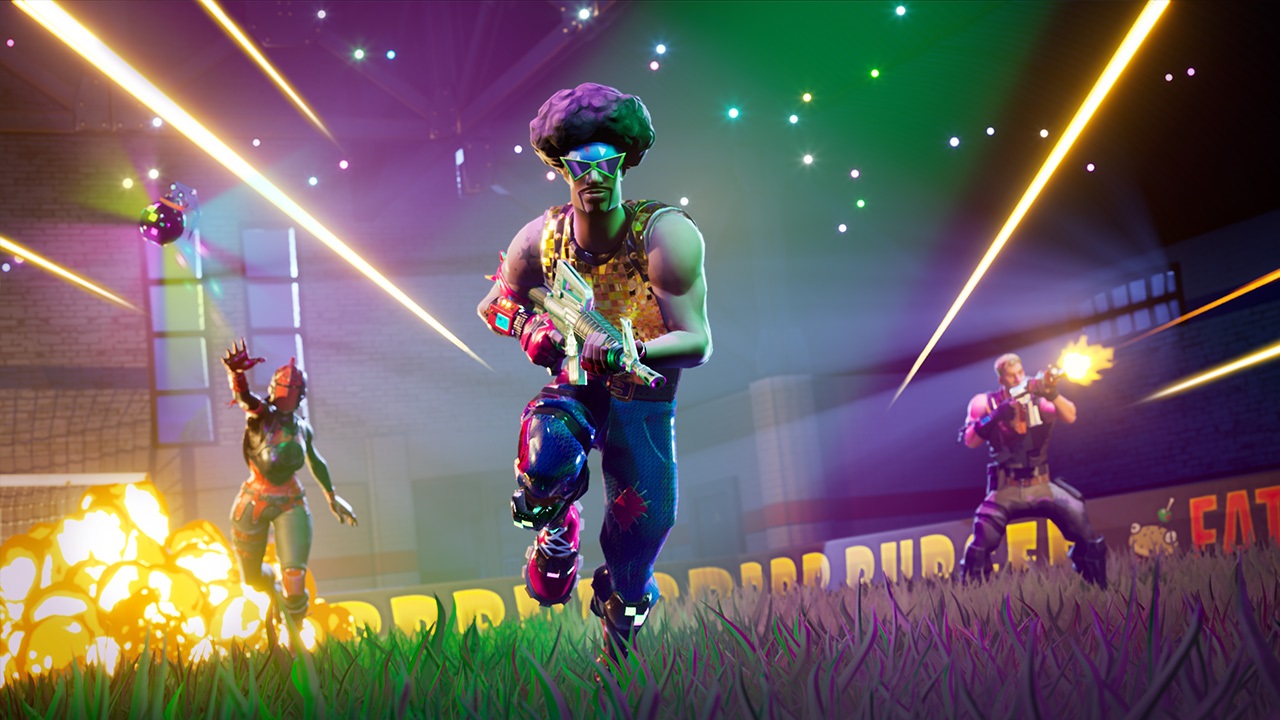
Typically Harry’s lessons run over ten sessions, however my two-hour intensive class was still hugely beneficial. Not just because of the strategies I learnt, but because of the way my view of Fortnite changed. I find myself now prioritising materials and building, throwing up walls at the first sign of combat and not taking unnecessary risks with opponents - where before I often forgot about the building element.
Fortnite coaches may never earn the same level of respect as piano tutors and driving instructors from the general public, but they are providing an important service in an ever-growing market - esports and gaming - so it’s time we jump aboard the Battle Bus and enjoy the ride.
(Image credits: Epic Games)
- Here’s all the latest Fortnite Battle Royale news and updates
An award-winning games journalist, with seven years of experience in games journalism and a degree in journalism from City University, London, Vic brings experience from IGN, Eurogamer, The Telegraph, VG247, Dot Esports and more to the TechRadar table. You may have even heard her on the radio or speaking on a panel, as she’s previously appeared on BBC Radio 4, BBC Radio 5, BBC Radio Ulster and more. Not only is Vic passionate about games, but she's appeared on both panels and podcasts to discuss mental health awareness. Make sure to follow her on Twitter for more.